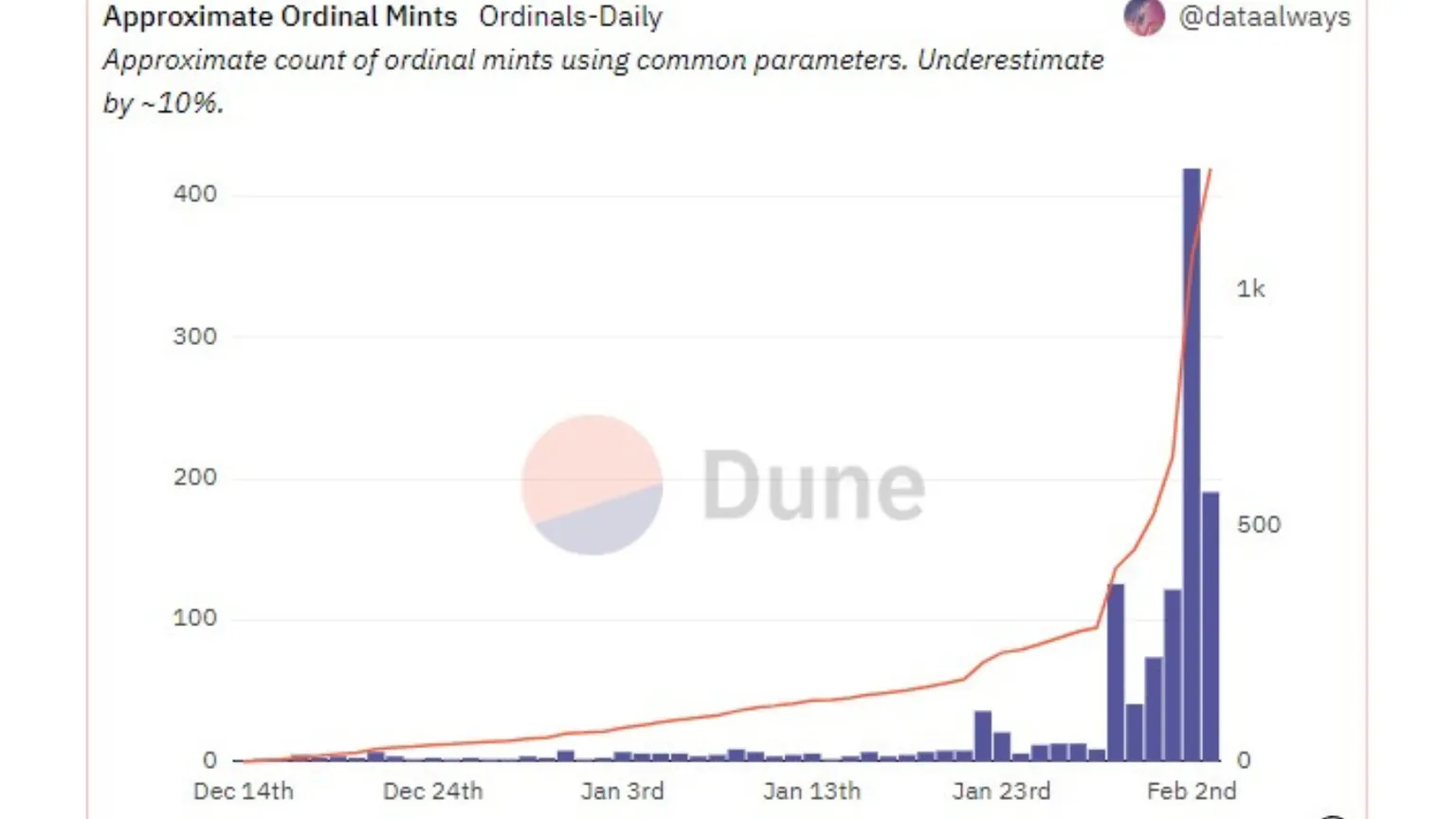TL:DR:
- Ordinals, a project that allows users to put NFT-like assets on the Bitcoin blockchain, is seeing increased activity this week.
- Over 1,000 total Bitcoin NFTs have been minted via Ordinals, and 420 new inscriptions were made on Thursday, the largest single-day amount.
- However, the increased activity also leads to higher transaction fees, which has sparked a debate among Bitcoin maximalists.
- Ordinals developer Casey Rodarmor believes that full blocks are necessary for higher transaction fees, but he does not support increasing the block size.
Ordinals is far from Ordinary for Bitcoin
Bitcoin is the largest crypto asset by market cap, but it’s not typically used for NFTs. Despite that, the controversial new project called Ordinals is allowing users to put NFT-like media assets on the Bitcoin blockchain, which is seeing a surge in activity. This article will explore the rising trend of Bitcoin NFT mints, why Bitcoin is not suitable for NFTs and smart contracts, and why transaction fees are increasing as a result.
Dune Analytics show off ordinal mints as of lately
Ordinals and Bitcoin NFT Mints
Ordinals is a project that lets users put NFT-like assets on the Bitcoin blockchain, and it has seen a surge in activity this week. According to public blockchain data curated by Dune, over 1,000 total Bitcoin NFTs have been minted via Ordinals, and on Thursday, 420 new inscriptions were made on the blockchain, which is the largest single-day amount. The launch of Ordinals has revived the debate in the Bitcoin space about block sizes, legitimate transactions, and whether media assets should be inscribed on the original blockchain.
NFTs and Bitcoin
NFTs are digital assets that are provably unique and linked to digital and sometimes physical content, such as artwork, movies, and music files. They can prove ownership of an item or membership in an exclusive group. Blockchains like Ethereum and Solana are synonymous with NFTs, but the practice of committing digital assets to a blockchain network has existed on Bitcoin since 2014.
Rising Transaction Fees
Rising transaction fees are a side effect of adding NFTs to the Bitcoin network. Bitcoin transaction fees are determined by the volume of data in the transaction and the speed at which the user wants the transaction to be completed. Users who want their transactions to go through during periods of high traffic may choose to pay more fees to push their transactions through. The increase in transaction fees has led some Bitcoin maximalists to call Ordinals an affront to the Bitcoin ethos, while others say the project allows the spamming of the decentralized network.
We can have NFTs and collectables on Bitcoin without spamming/attacking the network.
— @LukeDashjr@BitcoinHackers.org on Mastodon (@LukeDashjr) February 3, 2023
Taproot actually makes this even easier; the "tapscript" could be a new kind that refers to a torrent magnet instead of a script, and the spend on-chain doesn't need to add any data.
Ordinals Developer’s Views
Ordinals developer Casey Rodarmor believes that full blocks are necessary for higher transaction fees, but he does not support increasing the block size. He explains that if blocks are not full, then users have no reason to pay more than the minimum fee rate to have their transactions included in a block. As a result, blocks must be full.
tl;dr after digging into the Ordinals "spam" debacle:
— Seth For Privacy (@sethforprivacy) February 3, 2023
1) This has been possible since SegWit
2) Taproot didn't enable this, it just made it (very) slightly easier and cheaper
3) Prepare for the FUD as proponents of Bitcoin's early ossification try to weaponize this w/o nuance
So, what now?
In conclusion, Ordinals is a project that is allowing users to put NFT-like assets on the Bitcoin blockchain, which is leading to increased activity and higher transaction fees. While some Bitcoin maximalists see Ordinals as an affront to the Bitcoin ethos, the developer believes that full blocks are necessary for higher transaction fees but does not support increasing the block size.

Thank you for reading Solanews, follow our social media for more.


